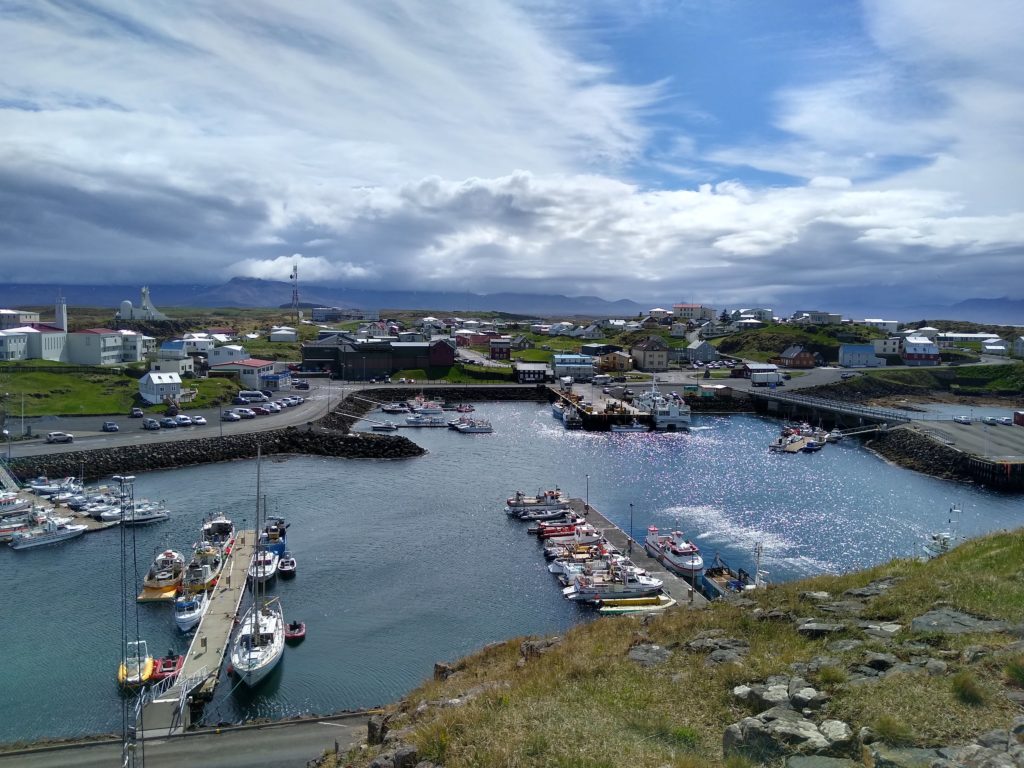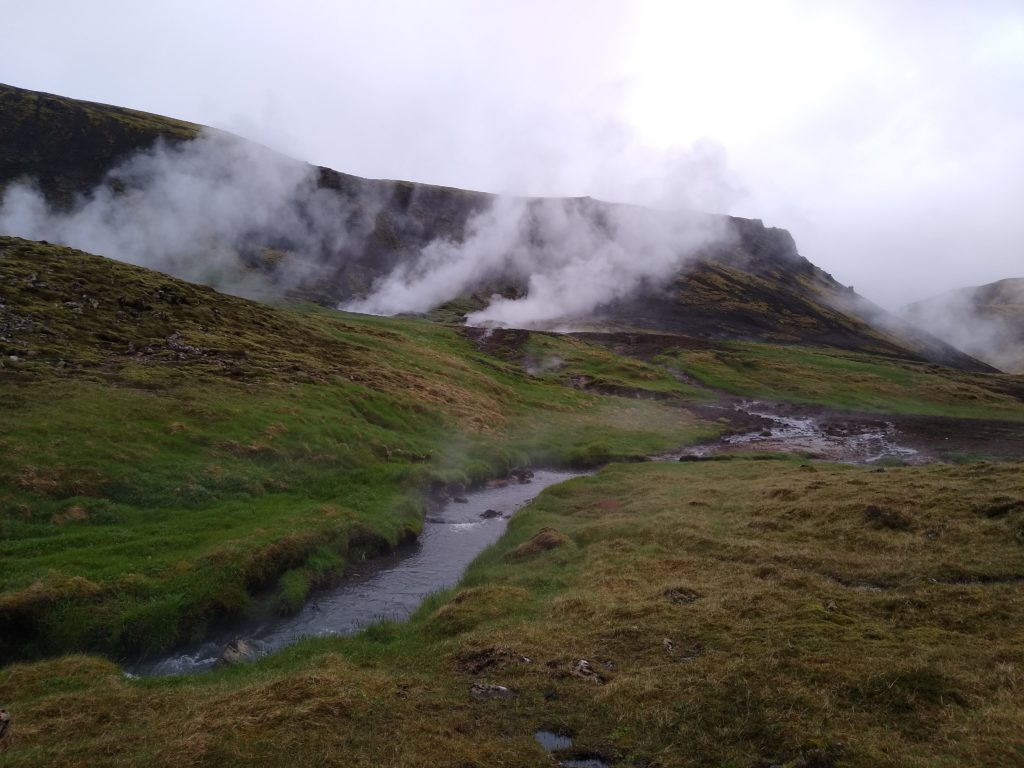
Travel Journal, 136
A couple of years have passed since I stood on the barren ground in Iceland. I gotta say, Iceland is not for everyone. It sits at the top of the world, neither North American nor European. This otherworldly place may make you uncomfortable with its sparse landscape, smoking earth, endless light (and darkness in the Winter), and black-pebble beaches. With the exception of tourist locales, it often haunts visitors with its lack of people. Open roads seemingly lead nowhere, for miles on end.
But it also surprises with an unexpected warmth. The people who live there are active, hiking the rugged terrain to nearby volcanos and glaciers. Tiny restaurants dot the landscape, here and there. It’s easy to find terrific fish and chips on this island in the cold, Cod-teeming North Atlantic Ocean. Astounding local music pours from cafés and clubs and theaters. The Jazz scene is the best in Europe. And one of my favorite Icelandic traditions happens on Christmas Eve. In the newly independent, post-WWII Iceland, the struggling economy greatly restricted what could be imported. But paper and books were prevalent. So when Christmas rolled around, the people here turned to their history of literacy and began a “Christmas Book Flood.” (Jólabókaflóð) So each Christmas eve, Icelanders give and receive books, reading and drinking hot chocolate deep into the Christmas season.
It seems that though Iceland is a rough place at the edge of the world, the people there do whatever just to stay alive. One of my favorite movies is The Secret Life of Walter Mitty. Many of the scenes in that movie were filmed there. It follows a discontent guy in his forties who hasn’t been anywhere noteworthy or mentionable, or done anything noteworthy or mentionable. He slaves away at his corporate job and faces getting downsized when his company goes online. He’s forced to break out of his constant daydreaming and face a real-life world with adventures, people, and experiences better than anything he can imagine. Walter lost his dad at a young age and has since then put his dreams away. At the beginning we are led to believe that he is simply just doing what he has to do to get by. But when forced to leave his desk, we discover that when he actually does what he needs to do to survive, he’s really thriving.

Though the people in Iceland appear to just manage during a dark winter and barren land, they are really thriving. It’s the beauty of this life. We tend to literally make the best of things. We get a taste of that here in Minnesota. The sun hardly shows its face during Winter. The minus 40 windchill prohibits most activities. And everything feels dismal. But somehow, we thrive.
Stay Alive, by Jose Gonzales plays throughout the film, Icelandic terrain as the backdrop. The song tells the story of the movie.
There’s a rhythm and rush these days
Where the lights don’t move and the colors don’t fade
Leaves you empty with nothing but dreams
In a world gone shallow
In a world gone lean
He’s missing something, until we breaks out and finds that…
Dawn is coming
Open your eyes
Look into the sun as the new days rise
We’ll do whatever just to stay alive
I thought of this song as we stood looking out on the North Atlantic in the fishing village of Stykkishólmur. The helicopter scene was filmed there. The quiet and quaint town sits on the north end of western Iceland. Sun sets for an hour in the summer, and rises for only an hour in the winter. It takes hours to get there from anywhere.
A tough place.
Out of the way from anything.
They fish and create crafts and run tiny cafés and serve people like me darn good coffees. One could say that they’re just getting by. But in their “getting by” they’ve created a place of warm delight. They thrive in a seemingly hard, but now beautiful life.
They do whatever just to stay alive.
anthony forrest
You can revisit Iceland in these other stories:
Iceland: on Covid testing and travel in a post-pandemic world
Leave a Reply